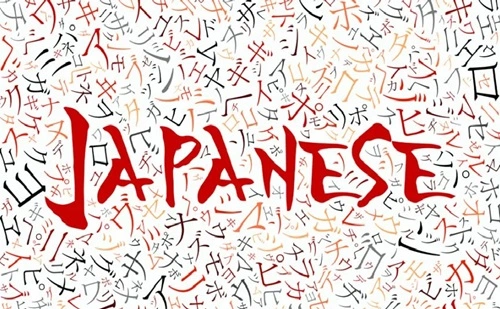The Japanese language, spoken by over 125 million people worldwide, is one of the most fascinating and unique languages in the world. Known for its complex writing system, rich history, and cultural significance, Japanese is a language that draws attention not only from language enthusiasts but also from those captivated by Japanese culture, anime, technology, and more. As the language of Japan, a country renowned for its traditions, innovations, and arts, Japanese holds a prominent place in the global linguistic landscape.
In this article, we dive into some of the most interesting facts about the Japanese language, shedding light on its intricacies, quirks, and global influence.

1. Three Distinct Writing Systems
One of the most remarkable features of the Japanese language is that it uses not just one, but three distinct writing systems: Kanji, Hiragana, and Katakana.
- Kanji are characters borrowed from Chinese, representing ideas or concepts. They are often used for nouns, verbs, and adjectives.
- Hiragana is a phonetic script, primarily used for grammatical elements and native Japanese words that don’t have corresponding Kanji characters.
- Katakana is another phonetic script, used for foreign loanwords, names, and certain onomatopoeic expressions.
These three scripts often appear together in a single sentence, making Japanese a complex and visually rich language.
2. Kanji Characters: Over 50,000!
There are over 50,000 Kanji characters, though not all are used in daily life. To be literate in Japanese, one needs to know about 2,000 to 3,000 Kanji characters. These are known as the Joyo Kanji, and they are essential for reading newspapers, books, and official documents in Japan. Each Kanji has multiple readings and meanings, depending on its context, which can make learning the language both challenging and rewarding.
3. A Language Isolate
Japanese is considered a language isolate, meaning it has no clear relationship with other languages, despite some similarities with Korean and certain influences from Chinese. Unlike languages like English or Spanish that belong to larger language families, Japanese is a stand-alone language, with its unique grammar, vocabulary, and syntax. While it has absorbed words from other languages, especially over the last century, its core structure remains distinct and independent.
4. Politeness Levels
One of the key aspects of speaking Japanese is understanding the levels of politeness or keigo. There are three primary levels of speech: casual, polite, and formal/honorific.
- Casual Japanese is used among friends and family.
- Polite Japanese is used in more formal situations or with strangers.
- Honorific Japanese (Keigo) is used in professional settings, with elders, or when showing deep respect.
Mastering these levels of politeness is crucial in Japan, where showing respect through language is an integral part of the culture. The choice of words, verb forms, and even sentence structures changes depending on the level of politeness.
5. No Plurals
In Japanese, nouns do not have distinct plural forms. The same word can refer to both singular and plural objects or people. For example, the word “neko” can mean “cat” or “cats.” Context is often used to determine whether a noun is singular or plural, and sometimes additional words like “tachi” are added to indicate plurality, especially when referring to people, such as “kodomo-tachi” for “children.”
6. Particles: The Backbone of Japanese Grammar
Japanese grammar relies heavily on particles, which are small words that come after a noun or verb to indicate its grammatical function. Some of the most common particles include:
- wa (topic marker),
- ga (subject marker),
- o (object marker),
- ni (indicates direction or purpose), and
- de (indicates location or means of action).
Particles are critical to understanding sentence structure, as Japanese is a subject-object-verb (SOV) language, meaning the verb comes at the end of the sentence.
7. Foreign Loanwords
Japanese has adopted thousands of loanwords, especially from English. These words are written using Katakana and are often modified to fit Japanese phonology. For example:
- Terebi (テレビ) comes from “television”,
- Kōhī (コーヒー) comes from “coffee”, and
- Takushi (タクシー) comes from “taxi.”
Over the years, words from Portuguese, Dutch, and German have also made their way into Japanese. While the core of the language remains distinctly Japanese, these borrowed words reflect the global interactions Japan has had throughout its history.
8. Japanese Has No Future Tense
Unlike many languages, Japanese does not have a distinct future tense. Instead, the present tense is often used to indicate future actions, relying on context and time-related words to convey the meaning. For example, the sentence “Ashita eiga o mimasu” can mean both “I will watch a movie tomorrow” and “I watch movies tomorrow.” The inclusion of “ashita” (tomorrow) clarifies the time, even though the verb remains in the present tense.
9. The Japanese Writing System Was Influenced by Chinese
The Japanese writing system was deeply influenced by Chinese characters. Around the 5th century, Japan did not have its own writing system, and thus began adopting Chinese characters, or Kanji, to represent their language. Over time, these characters were adapted to suit Japanese words and grammar, eventually leading to the development of Hiragana and Katakana, which are uniquely Japanese.
10. Japanese Dialects
Japan is home to a wide range of dialects or hōgen. Each region of Japan, from Kansai to Hokkaido, has its distinct way of speaking Japanese. The Kansai dialect is perhaps the most well-known, famous for its differences in vocabulary, intonation, and grammar compared to standard Japanese, which is based on the Tokyo dialect. In some regions, these dialects are so different that speakers from other parts of Japan may have difficulty understanding them.
11. Onomatopoeia is Everywhere!
Japanese is rich in onomatopoeic words—words that mimic sounds or actions. These are used far more frequently than in most languages and can describe not only sounds but also feelings, textures, and movements. For example:
- Pika-pika (ピカピカ) means something is shiny or glittering,
- Doki-doki (ドキドキ) represents a fast heartbeat,
- Shiwa-shiwa (しわしわ) describes something wrinkled or crinkled.
These playful expressions add depth and vividness to the language and are an integral part of everyday conversations.
12. Japanese Is the Gateway to Anime and Manga
For fans of anime and manga, Japanese is a gateway language. While many anime series and manga are translated into other languages, purists often prefer to experience these cultural products in their original language. Japanese anime has a massive global following, and learning Japanese allows enthusiasts to enjoy the nuances, cultural references, and original dialogues without relying on subtitles or translations.
13. Honorific Titles Are Key
In Japanese culture, addressing someone with the correct honorific title is crucial. Some common honorifics include:
- -san: a general title of respect (similar to Mr./Ms.),
- -kun: used for younger men or boys,
- -chan: an affectionate term for children, close friends, or lovers,
- -sensei: used for teachers, doctors, or professionals.
These titles reflect Japan’s deep-rooted culture of respect and hierarchy, and they are a vital aspect of polite communication.
Conclusion
The Japanese language is not just a medium of communication but also a reflection of Japan’s deep cultural heritage, social values, and historical evolution. From its intricate writing system to its unique grammar and politeness levels, Japanese offers a rich and rewarding experience for learners. Whether you’re fascinated by its role in anime, the beauty of Kanji, or its role as a cultural symbol, the Japanese language continues to intrigue and inspire people worldwide.



